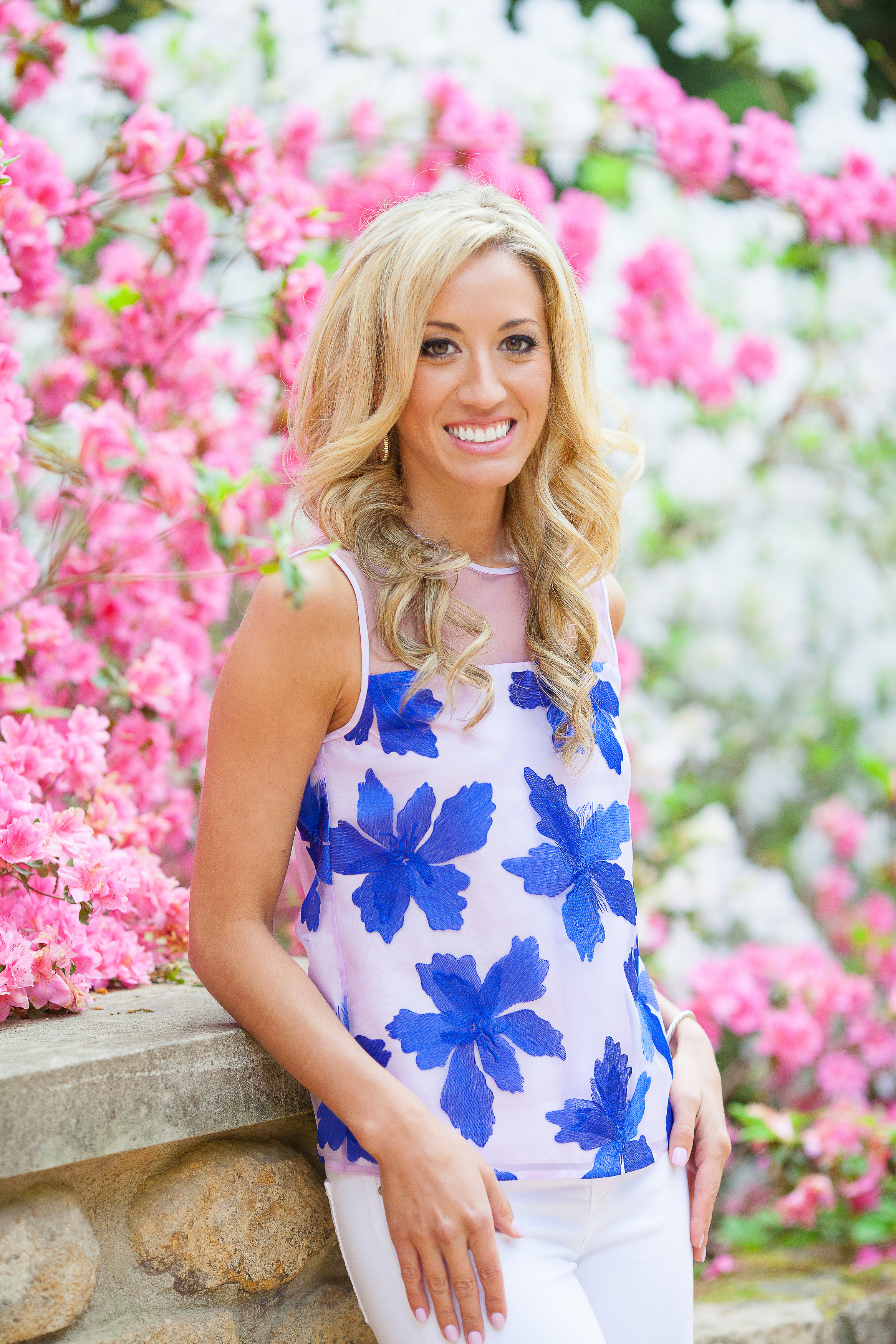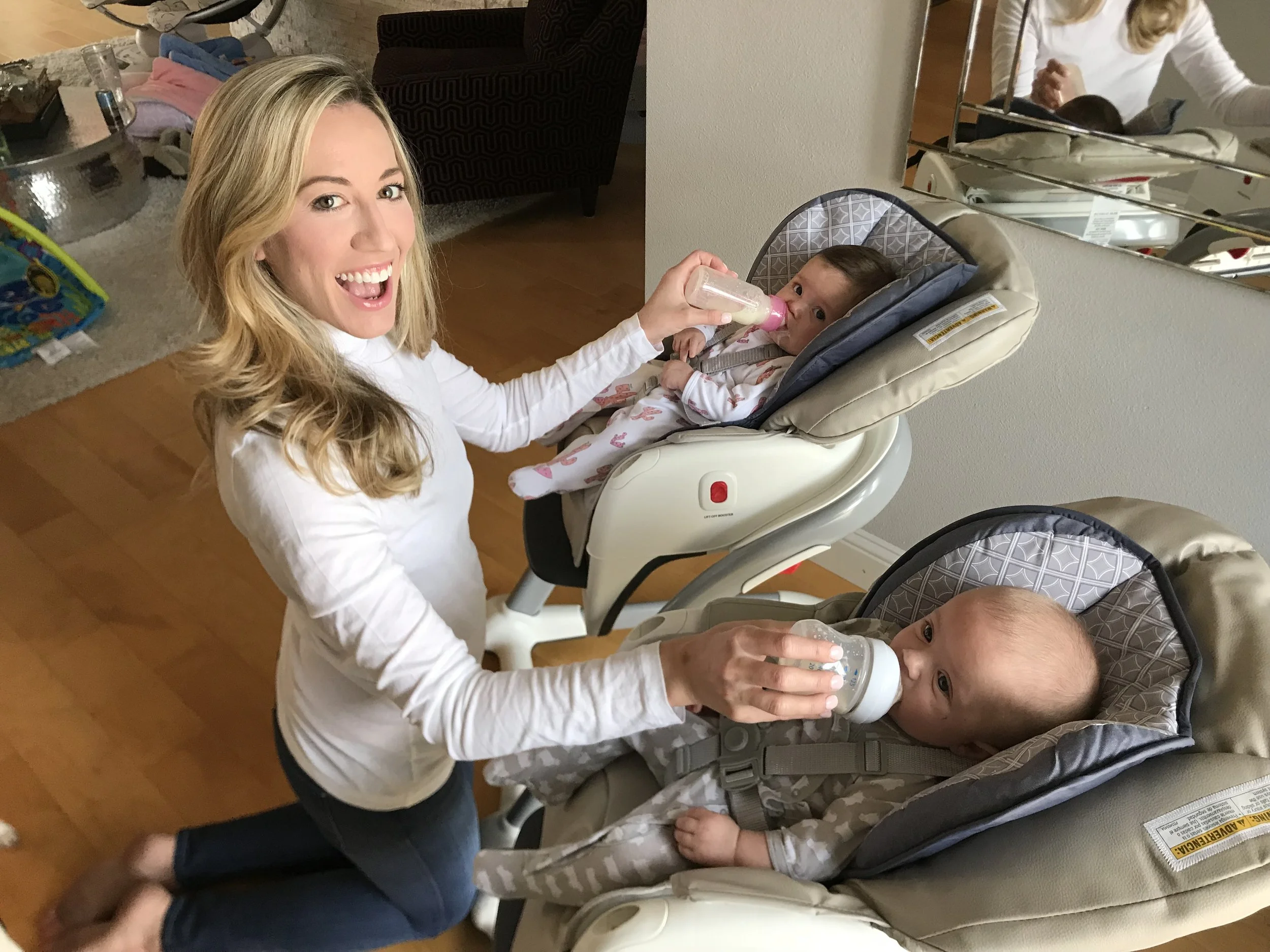How I Got My Twins To Sleep Through The Night By 4 Months
Just when you think you feel a vampire fang growing in your mouth after months of no sleep, your twins may go and surprise you (like ours did)! For one reason or another, it may take some babies longer than others to sleep through the night, but we all get there…. eventually. The most important thing to remember is to do what your child’s pediatrician has recommended you do, as you want your babies to weigh enough to go all night without a feed and they need to be developmentally ready to self-soothe. Here, just as a mere reference, I’m going to share with you how my husband and I personally got our babies to sleep through the night after only 2 nights of sleep training.
Defining “Sleeping Through The Night”
First things first. What does "sleeping through the night" even mean? We all may define it a little differently. Some may say it means a baby sleeps for 12 hours straight, whereas others may say it’s when they’re sleeping for only 6 hours straight. Personally, my definition is somewhere in between. I define sleeping through the night to be what I would need myself, which is 7-8 hours straight with no interruptions or night feeds. We reached this goal at 4 months.
Photo by: Paige Walker Photography
Our Twins’ Sleep Timeline
Here is a table that shows you the sleep progress our babies made from 4-7 months:
Photo by: Paige Walker Photography
How We Got There: Sleep Training
Before cribs, our twins typically slept at night in their bassinets wrapped up in sleep sack swaddles and with pacifiers in their mouths. From ~3.5 months old, I started putting both babies down for at least 1-2 naps per day in their cribs in their nursery. I did this to get them familiar with their cribs in preparation for their impending full-time transition.
The American Academy of Pediatrics traditionally recommends for babies to sleep in their parents’ room until 6 months of age. This was our goal. However, our twins simply grew too long for their bassinets at an early age. Towards the end of the bassinet era, my son’s way of fitting was to prop his legs up over the side of the bassinet – which clearly wasn’t a good solution. We had no choice. Right around 4 months, my husband and I decided it was officially time to move the twins to their cribs (away from us) in their nursery full-time. At that time, the babies were still needing bottles around 11PM and 4AM. They were only sleeping for ~4-5 hours straight at night with frequent awakenings.
The week the babies turned 4 months, in the midst of his exhaustion, my husband made the executive decision that we needed to sleep train the babies. He had a friend that successfully did it with their child and he wanted to go for it, too. That said, we initiated the same Ferber method sleep training (aka the “cry it out” method) that his friend had recently used. We used a timer and progressively lengthened the response times to instill self-soothing. You can view the Ferber method chart here and adapt it to suit your needs, as we did.
Here is what we did to sleep train our twins using the Ferber method:
Night 1: Started with a 5-minute response time
Whenever a baby woke up crying that first night of sleep training, my husband would grab his phone and set a 5-minute timer. Once the timer went off, one of us would get up and soothe the babies (pick them up, rock them, give them their pacifiers, etc). We did this several times that first night. It was extremely hard to listen to the cries and not want to just pick them up immediately. It felt like the longest 5 minutes you’ve ever experienced! Unsurprisingly, we didn’t get very good sleep that night.Night 2: Advanced to a 10-minute response time
Each time they woke up crying that second night, we then set a 10-minute timer before we got out of bed to calm them. This happened probably ~2 times that night.Night 3: The twins slept for 7-8 hours uninterrupted!!
It truly only took us those first 2 nights of sleep training to get them to stop their nighttime awakenings for the most part (yes, I know that sounds insane and simple, but it’s true). It worked incredibly fast. Through those first two brutal nights, the twins had officially learned how to self-soothe. And even now, at 7 months, they are overall sleeping through the night beautifully. Of course, some nights here and there we may have one random 4 AM crying fit but overall no major issues after they fall asleep. Our twins naturally progressed the following 2-3 months towards sleeping for 12 hours straight without any special further intervention.
All that said, we also kept a routine each night to wind down before bedtime. Consistency was definitely key for us to ease all of these major changes.
Our Nightly Routine (During and After Sleep Training)
Give bath (if it’s a bath day) in evening.
Feed the babies their last bottle of the night right before bed.
Change diapers.
We put the babies in a diaper one size bigger at night to hold more urine (and ultimately to avoid any cries due to overly full diapers). And we still do this!
Place twins in sleep sacks (until 6 months).
In an effort to reduce the number of major changes at once, we eased the twins from their sleep sack swaddles to regular sleeveless sleep sacks to no sleep sacks. When the babies started sleeping in the cribs during sleep training, we changed from swaddles to sleeveless sleep sacks. At 6 months, we then eliminated sleep sacks all together.
Dim lights.
Read a bedtime story in the nursery recliner.
Place babies in their own cribs while still awake, give each baby a pacifier, and turn mobiles on.
I found it to be important to put the twins down in their cribs while awake. This forced them to fall asleep independently. I do what I can to avoid having to rock them to sleep for this reason!
Turn off lights and turn on fan in their nursery.
The reason we did (and still do) this is two-fold: 1) the hum of the fan is relaxing to the babies and 2) having a fan in your twins’ nursery can reduce the risk of Sudden Infant Death Syndrome (SIDS) by 72%!
Retreat to our master bedroom on the other side of the house and turned on the nursery cameras via iPad to listen and monitor for any cries during the night.
Ferber Method as previously described.
All that said, I believe 3 additional key factors that can't go unmentioned played into our ability to successfully sleep train our twins so quickly at 4 months:
We added rice/oatmeal cereal into the last few bottles of the day for reflux purposes per our pediatrician’s recommendation, but I do think this had an added bonus of a fuller feeling at night and better sleep. Check out my previous post about how we fed the twins at that time.
I almost never allowed the twins to fall asleep in other people’s arms and frequently requested for guests/family members to only hold the babies if they were crying, being fed, or needed something. Otherwise, if the babies were happy or sleeping during the day, I asked people to leave them be. I strongly believe this helped my babies become more independent and less in need of constant physical attention. When you’re the only person at home (like me) with two babies during the day, you have to set yourself up for success.
We did not promote playtime in the cribs. We did this to teach the twins that when they are placed in their cribs, that means they are supposed to go to sleep.
The whole process required diligence and consistency from both me and my husband. When my husband first suggested we use the Ferber method, I wasn’t so sure about it. But, after seeing our success after only 2 nights, I have to admit I sure am glad I let him talk me into it! Caring for twins with a full night’s rest is something you DESERVE and NEED (for your sanity :-)). No vampire fangs here. Good luck!!
Drop a comment below if you have any further questions about how we did this!







